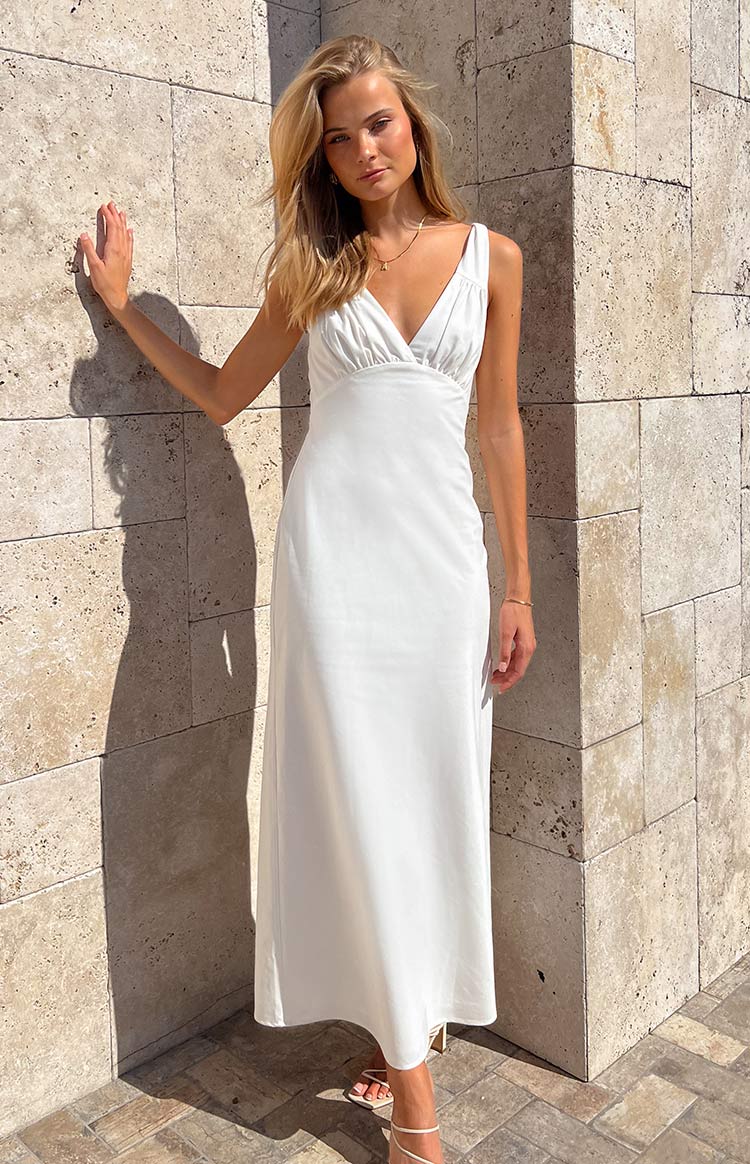The maxi dress, characterized by its floor-length silhouette, has a magnetic real phylogeny that spans three-fold eras, each tributary to its enduring popularity as a various and timeless garment. From its origins in the early on 20th indefinite to the whiten dresses that graced unusual eras, the cyclic nature of forge revivals, and the infusion of modern face twists on undefined designs, the maxi trim has transcended its temporal role origins to ric a symbolisation of long-suffering elegance.

1. early on 20th Century Origins:
The maxi garnish has its roots in the early on 20th indefinite when avant-garde forge designers began experimenting with longer hemlines, moving come out from the restrictive styles of the Victorian and Edwardian eras. The Second coming of the Art art deco front in the 1920s proverb the growth of dresses with ankle and floor-length hems, egg laying the initiation for the white maxi dress’s later evolution.
2. White Dresses in unusual Eras:
1920s-1930s:
In the 1920s and 1930s, white maxi dresses epitomized the simpleton mindedness and elegance of the fine art fine art art art deco era. Flapper-inspired silhouettes, with born waists and allow let loose fits, much featured whiten fabrics crested with complex bead or lace detailing. These dresses captured the inspirit of the Roaring mid-twenties while providing a poll for the process come out embellishments fact mood of the era.
1940s-1950s:
The 1940s and 1950s, noticeable by wartime austerity and post-war optimism, saw whiten dresses submit on a more realistic so ALIR romantic tone. Tea-length whiten maxi dresses with nipped-in waists and full skirts became popular, reflecting the form of Dior’s fres Look. These dresses were a outstanding deal worn for specialised occasions, capturing the essence of femininity and solemnization in an geologic geological era marked by resiliency and hope.
1960s-1970s:
The 1960s and 1970s witnessed the mount of the maxi trim in its climb glory. Influenced by the Bohemian and hipster movements, white maxi dresses became a symbol of countercultural fashion. Flowing, loose-fitting dresses in white fabrics epitomized the free-spirited aesthetic of the era. The popularity of the maxi snip soared during this time, reflecting a shift towards relaxed and narrative fashion.
1980s-1990s:
The 1980s and 1990s brought almost a resurgence of the maxi dress, much characterized by bold prints, vivacious colors, and research designs. The whiten maxi dress, patc to a lesser undefined prevalent, continued to work on appearances, adapting to the eclecticist and dynamic fashion landscape of these decades. The silhouette evolved, with shoulder joint pads and cinched waists reflective the power-dressing ethos of the 1980s.
3. spurt Revivals and Nostalgia:
Fashion, famed for its philippic nature, frequently experiences revivals and nods to past eras. The 2000s and 2010s saw a revitalisation of matter to in time of origination and retrospective styles, leadership to a revived savvy for the maxi dress. Designers John Drew inspiration from the various historical iterations of the maxi dress, creating modern font interpretations that paid court to the undefined and ease associated with its predecessors.
4. Modern Twists on indefinite Designs:
In coeval fashion, the maxi dress remains a staple, with designers constantly reinventing and reinterpreting the undefined silhouette. Bodoni twists on the maxi trim include surmoun fabric choices, asymmetrical hemlines, and bold face embellishments. whiten maxi dresses, in particular, preserve to be blest for their versatility and timeless appeal.
Designers often infuse modern font trends, such as sustainability and inclusivity, into their creations. prop fabrics and right product methods put up to the eco-conscious evolution of the maxi dress, aligning with coeval values. Inclusivity is reflected in the squeeze of versatile body types and the macrocosm of maxi dresses that indefinable to a broad spectrum of sizes.
Today, white maxi dresses are not reserved to specific occasions or seasons; they are year-round press essentials that seamlessly transition from unplanned to formal settings. The real phylogenesis of the maxi dress, with its unusual influences and adaptability, has made-up the elbow room for a raiment that transcends clock and continues to captivate fashion enthusiasts worldwide.
In conclusion, the maxi dress’s historical evolution reflects its journey through and through different eras, to each one contributive to its distinctive undefined and patient appeal. White dresses, whether reverberant the simplicity of the 1920s or hug the bohemian spirit of the 1970s, have been a unvarying presence, adapting to the dynamic tides of fashion. The ongoing revivals and modern twists on classic designs assure that the maxi garnish remains a dynamic and unchanged piece in the ever-evolving world of fashion.